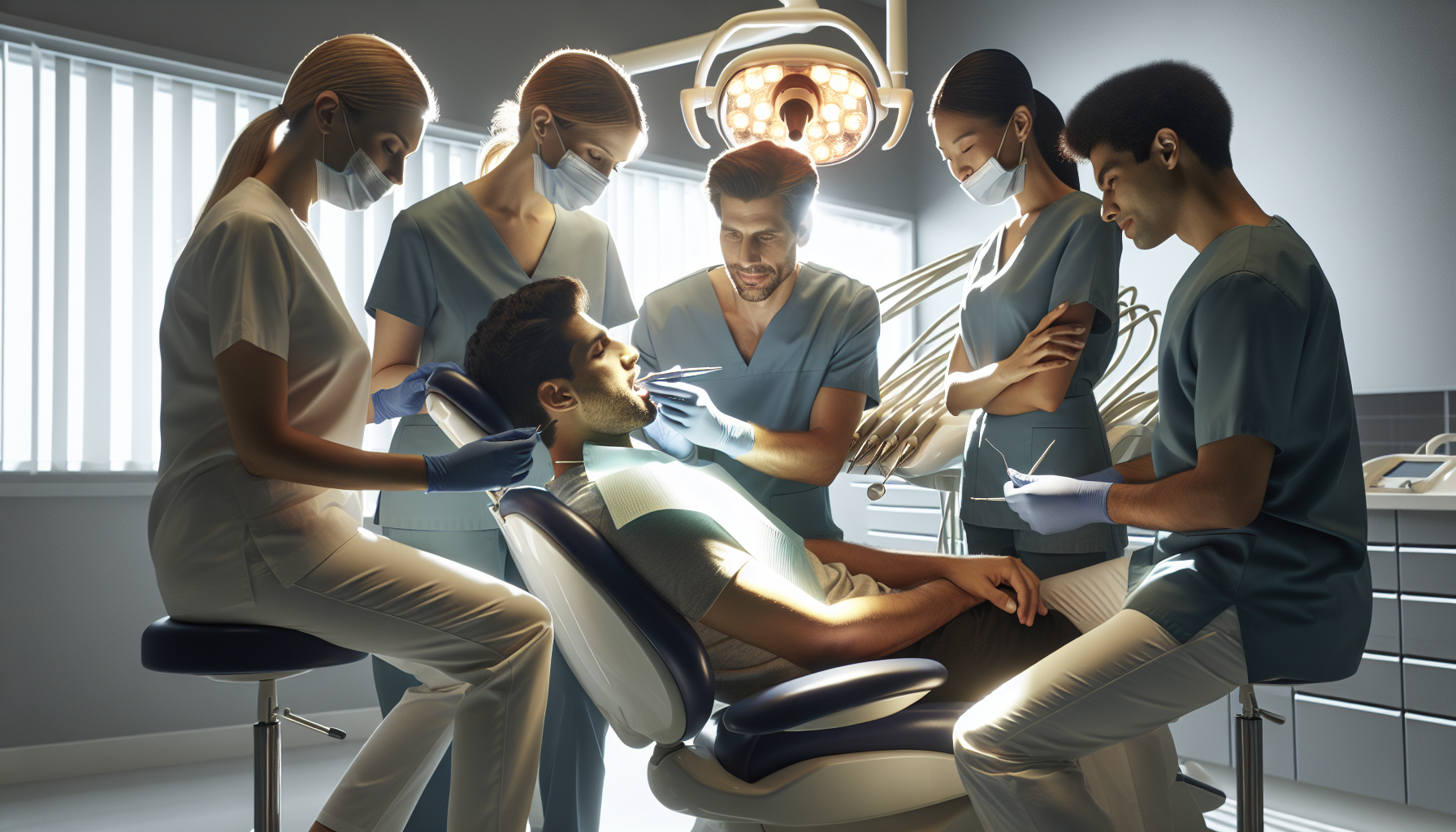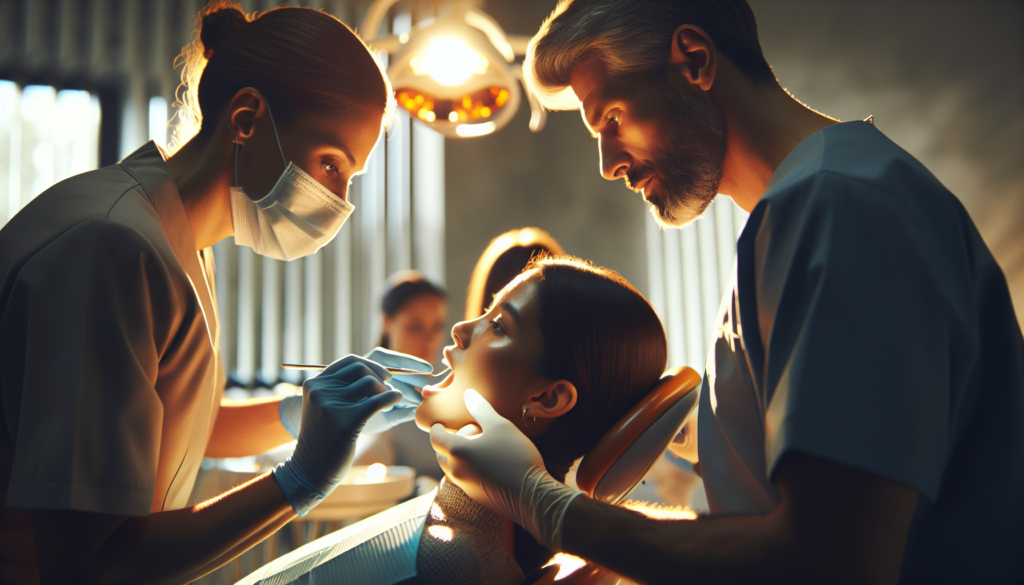Pathway for Dental Hygienists to Become Board Certified Orofacial Myologists
As dentistry continues to evolve, many dental hygienists are seeking ways to expand their expertise and enhance their patient impact. One of the most rewarding and increasingly in-demand specializations is orofacial myology. Becoming a Board Certified Orofacial Myologist (COM®) represents both a professional milestone and an opportunity to contribute to patients’ functional health and wellness on a deeper level.
Advancing Your Dental Hygiene Career Through Orofacial Myology
Orofacial myology focuses on the evaluation and treatment of oral muscle patterns and dysfunctions that affect breathing, chewing, swallowing, and speech. For dental hygienists, this field offers a natural extension of existing skills in oral anatomy, airway observation, and patient education. As awareness of airway health and myofunctional disorders grows, professionals trained in this therapy are in higher demand across interdisciplinary health care teams.
What Is Orofacial Myology?
Orofacial myology is the study and therapeutic re-education of the oral and facial muscles. Practitioners work to correct disorders of functions such as tongue thrust, improper swallowing, mouth breathing, and oral habits (e.g., thumb sucking or prolonged pacifier use). By restoring muscle function and coordination, orofacial myologists help patients achieve optimal oral rest posture — a key factor in overall oral and airway health.
Although historically linked to speech therapy, orofacial myology has increasingly become part of dental care, with growing collaboration between orofacial myofunctional therapists, dental hygienists, and orthodontists.
Why Dental Hygienists Are Ideal Candidates for Orofacial Myology Certification
Dental hygienists are uniquely positioned to transition into orofacial myology due to their solid foundation in oral anatomy, patient assessment, and prevention-driven education. Many of the daily tasks hygienists perform — evaluating oral function, discussing airway health, monitoring oral habits — directly support the principles of myofunctional therapy.
- Comprehensive oral knowledge: Hygienists already understand tongue and jaw alignment, muscular patterns, and the consequences of poor oral habits.
- Patient rapport: Their ongoing relationships with patients allow hygienists to identify functional issues early.
- Preventive mindset: Myofunctional therapy aligns perfectly with the preventive philosophy of dental hygiene practice.
By pursuing certification, hygienists not only expand their clinical scope but also become valuable contributors to interdisciplinary care teams involving dentists, speech pathologists, and ENT specialists.
The Role of the International Association of Orofacial Myology (IAOM)
The International Association of Orofacial Myology (IAOM) sets the global standard for training and certifying qualified professionals. Established in 1972, the IAOM supports consistent educational pathways, ethical standards, and continuing education requirements for clinicians in this field.
Its credential, the Certified Orofacial Myologist (COM®), is recognized internationally. Achieving the COM® credential demonstrates that the practitioner has met rigorous competency benchmarks, ensuring high-quality patient care and professional credibility.
Education and Training Requirements
Before pursuing board certification, candidates must meet educational prerequisites and complete an IAOM-approved course. Typically, eligible applicants include dental hygienists, dentists, speech-language pathologists, and other licensed health professionals.
- Completion of an IAOM-approved Foundations Course covering anatomy, physiology, and orofacial assessment techniques.
- Supervised clinical practicum with hands-on patient experience.
- Documented continuing education credits related to orofacial myology, speech, or airway health.
Ongoing education is essential to maintain certification and uphold the IAOM’s professional standards. Many programs offer hybrid learning options, enabling clinicians to balance work and study effectively. Explore our guide on how to choose the best orofacial myology program.
Steps to Become a Board Certified Orofacial Myologist (COM®)
The process of becoming a COM® is straightforward but requires dedication and commitment. Below is the general pathway for dental hygienists pursuing IAOM certification:
- Complete a Foundations Course in Orofacial Myology: This provides the core knowledge and techniques to assess and treat myofunctional disorders.
- Gain Clinical Experience: Apply concepts in a supervised environment or within your dental practice while collecting case documentation.
- Submit Case Studies: Candidates must present completed patient cases demonstrating expertise and ethical application of therapy techniques.
- Pass the COM® Examination: The exam includes both theoretical and clinical components verifying professional competence.
- Maintain Certification: Periodic renewal and continuing education ensure practitioners stay current with new research and methods.
Each step brings dental hygienists closer to establishing themselves as leaders in this evolving specialty. You can also review additional continuing education programs for dental hygienists that complement orofacial training.
Career Benefits and Opportunities for Certified Orofacial Myologists
Once certified, dental hygienists gain access to a variety of rewarding career paths. The COM® credential enhances credibility among peers, enables expanded service offerings, and opens doors to niche practice opportunities.
- Professional growth: Certification distinguishes you as an advanced practitioner within your dental or interdisciplinary team.
- Expanded services: Myofunctional therapy can be integrated into routine hygiene appointments or offered as a stand-alone service.
- Broader network: Work alongside speech therapists, pediatric dentists, and otolaryngologists to provide holistic care.
- Entrepreneurial potential: Many COM®-certified hygienists eventually open private practices dedicated to orofacial therapy.
Learn how our certified orofacial myologists incorporate these therapies within clinical teams to improve patient outcomes.
Challenges and Tips for Success
Transitioning into a new specialty demands time, education, and perseverance. Understanding potential challenges will help professionals prepare more effectively.
- Time commitment: Certification can span several months depending on course schedules and case requirements.
- Financial investment: Costs may include tuition, travel for workshops, and examination fees.
- Mentorship: Seek experienced IAOM mentors who can offer clinical feedback and guidance.
- Balance: Manage existing workplace responsibilities alongside training commitments through effective planning.
Embracing these challenges as part of a growth journey can make the certification process personally transformative as well as professionally rewarding. Review insider strategies in our guide on the benefits of orofacial myofunctional therapy to gain more context.
Resources and Next Steps
Getting started requires clarity on your professional goals and the available support systems. Here are trusted resources to guide your journey:
- IAOM Official Website – Learn about approved courses, mentorship programs, and exam schedules.
- Continuing Education for Dental Hygienists – Keep your professional knowledge current while earning CE credits.
- Join study or accountability groups to stay motivated through coursework and clinical documentation.
- Attend conferences or webinars hosted by IAOM for networking and latest clinical updates.
Conclusion: Elevate Your Impact as a Dental Hygienist
Becoming a Board Certified Orofacial Myologist allows dental hygienists to bridge preventive care with functional therapy, significantly enhancing patient quality of life. By pursuing the COM® credential, you not only elevate your professional standing but also broaden your role as an educator and advocate for healthy oral function. Investing in this advanced specialty can redefine both your practice and purpose within dentistry.
Frequently Asked Questions
1. What qualifications are required to enroll in orofacial myology training?
Licensed health professionals such as dental hygienists, dentists, and speech-language pathologists are eligible to take IAOM-approved courses. Each program may have its own prerequisites depending on the training level.
2. How long does it take to become a Board Certified Orofacial Myologist?
The certification timeline varies but typically ranges between 6 months to 2 years, depending on course scheduling, practical hours, and case documentation.
3. Is orofacial myology covered by dental insurance?
In many cases, therapy is considered a specialized service and may not fall under standard dental coverage. However, patients can often use health savings accounts (HSAs) or medical reimbursement options.
4. Can I practice orofacial myology while working as a dental hygienist?
Yes. Many professionals integrate therapy sessions into their dental schedules or collaborate with their clinical teams to offer myofunctional services within existing practices.
5. What continuing education is needed to maintain COM® certification?
Certified professionals must complete approved continuing education hours as specified by the IAOM, usually every three years, to ensure ongoing competence and to stay current with new therapy techniques.
Post Disclaimer
DentalUp is for educational purposes only and cannot accept personal dental information such as x-rays, photos, or treatment details. See full disclaimer here.





